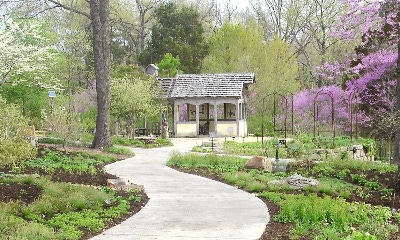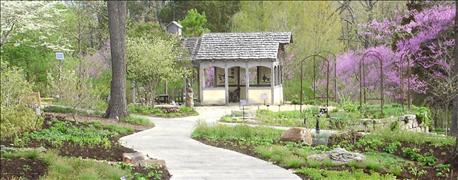September 21, 2016

To say that all native plants are weeds is a half-truth.
True, many native plants are overly aggressive like golden Alexander and rough-leaved goldenrod. Their use especially in the hands of underfunded or “fair-weather” gardeners has led to the failure and removal of a number of native gardens. But there is a flip side; there are many awesome native plants that stay put, are beautiful, support wildlife, and pass all municipal sniff-tests.

STRIKING GARDEN: Native gardens are not piles of wily weeds. They are quite stunning when gardeners design and care for the space.
Some examples of plants that keep a tidy appearance include littleflower alumroot (Heuchera parviflora) and Indian pink (Spigelia marylandica). Their use along with time-tested gardening practices of cluster planting, weeding, watering, and mulching (and a helping of creativity) has led to many success stories and some award-winning native gardens.
Off to a good start
Cluster plantings usually have three to five of the same kind of plant in an area about the size of a dinner table or 15 square feet. So, a160-square-foot flower bed may have up to 10 different kinds of plants depending on if you repeat clusters.
Repetition adds interest especially in long narrow flower beds. I like to repeat star sedge (Carex radiata) in the front of a border or feathery bluestar (Amsonia ciliata var. filifolia) in the back of the border. One shrub will take up one whole dinner table. Shrubs add height and shape to the bed like beautyberry (Calicarpa americana) (mounded) or leatherwood (Dirca palustris) (egg-shaped). They also can add winter interest with berries and branch structure. Clustered plantings also tend to be easier to keep weeded because you can see what is supposed to be where.
Watch out for weeds
One definition of a weed is a plant that is in the wrong place. Tree and vine weeds that invade from the neighborhood can wreak havoc in your garden and might be difficult to identify. They may attract wildlife and weed cops, but rarely attract happy neighbors. Watch out for seedlings of silver maple, boxelder, tree of heaven (exotic invasive), bush honeysuckle (exotic invasive), catalpa, pin oak, wild grape, trumpet creeper and others. Remove seedlings that sprout up. Seedlings allowed to grow wherever they may will lead to a weedy-looking garden.
Create interest
Successful gardens are fun to be in. Build a pathway that leads to a hidden nook with trickling water that attracts both people and birds. Create a patio shaded by a pergola covered with Virginia creeper and watch the woodpeckers devour all the berries. Construct raised beds to grow your favorite herbs, native annuals, and blazingstar (voles can eat blazingstar corms when planted in the ground). Find just the right ceramic container or start a collection and plant them with whatever interests you.
Horticulturist Scott Woodbury is the Curator of the Whitmire Wildflower Garden at Shaw Nature Reserve in Gray Summit, where he has worked with native plant propagation, design, and education for more than 20 years. He also is an advisor to the Missouri Prairie Foundation’s Grow Native! program.
You May Also Like




